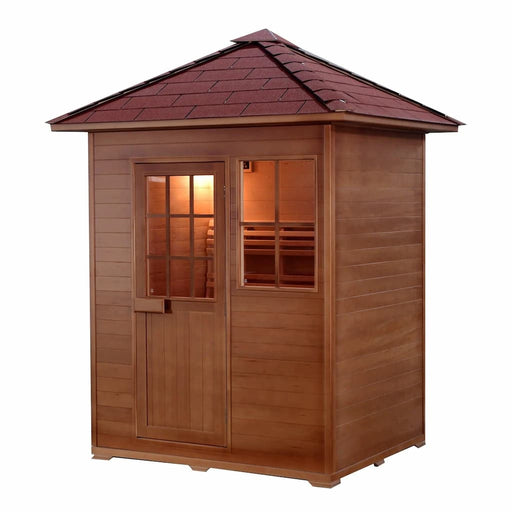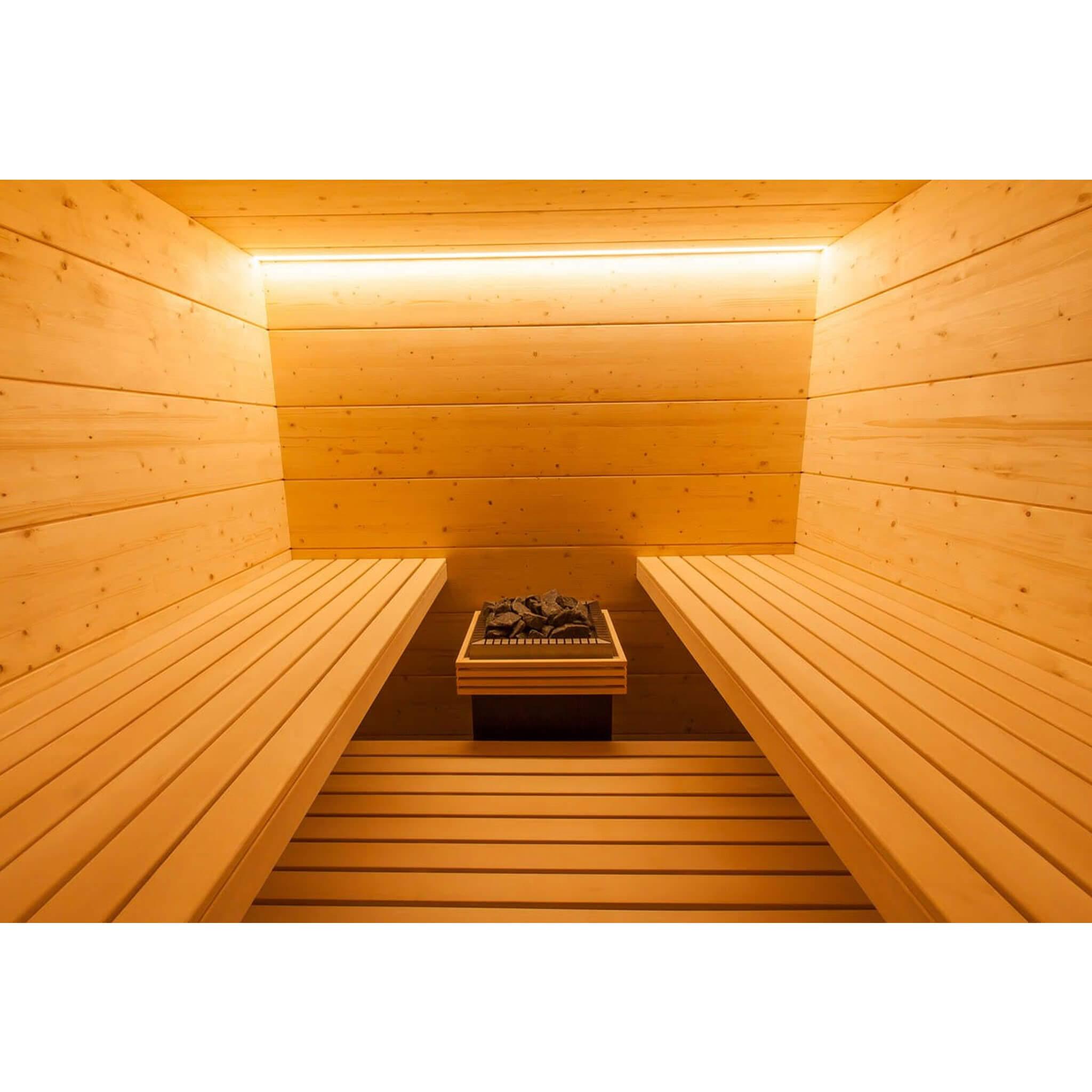The Best Guide To Traditional Sauna
The Best Guide To Traditional Sauna
Blog Article
Unknown Facts About Traditional Sauna
Table of ContentsTraditional Sauna for DummiesExcitement About Traditional SaunaThe Single Strategy To Use For Traditional Sauna10 Easy Facts About Traditional Sauna Described
A lot of the weight shed in a sauna is water loss and is re-gained upon rehydrating. However, without a question sauna can be a vital part of a healthy weight-loss program. To check out the distinctions in between traditional and IR saunas, I will certainly divide these into proven, academic, and made distinctions.Thus, the best factor in the saunawhich goes to the ceiling straight above the sauna heateris generally between 185 and 190 F. Traditional Sauna. Claims that a typical sauna surpasses 200 F is merely not real and not relevant for electric saunas marketed in the US. The temperature level for a far-infrared sauna is usually set between 120 and 140 F; however, unlike the conventional sauna, the objective in and IR room is not to accomplish a heat
As a result of this, the temperature level distinction is virtually irrelevant, given that profuse sweating results in both sauna types, yet the method of heating the body is various. In an IR sauna the bather will really feel hot and will sweat profusely, but at a lot lower temperature levels. Therefore, if the objective is to spend longer amount of times in the sauna, the IR sauna is an excellent selection.

Traditional Sauna - An Overview
When the high temperature is achieved, the aspects cycle on and off to maintain the heat. A lot of standard sauna individuals delight in pouring water over the rocks to create heavy steam to increase sauna moisture degrees. The advantages of putting water over the rocks include: making the room much more comfy, dampening the nasal flows, and permitting the use of aromatherapy by mixing necessary oils with the water.
In a far-infrared sauna, the heat waves penetrate the body to successfully heat the body and raise the body core temperature. To achieve this raised temperature, Far-infrared emitters produce infrared energy which is close to the very same wavelength as that which the body normally emitsoften described as the "Essential Array" of 7 to 14 microns), so the energy is well gotten by the body.
When the power gets in the body, it causes the body temperature to increase and eventually causes sweat. In an infrared sauna it is necessary for the emitters/heaters to stay on practically frequently. Given that there is no mass of rocks to retain heat, the sauna will cool if the emitters shut down.
As discussed over, the sauna bather in an infrared space wishes to place himself in front of running emitters try this out to obtain maximum take advantage of the warm. The home heating time for both spaces can be extremely different, depending upon how the spaces are utilized. For a traditional sauna, a bather needs to permit 30-40 minutes for the area to achieve a wanted temperature level and to effectively pre-heat the rocks.
Little Known Facts About Traditional Sauna.
A well built sauna will commonly accomplish a temperature level of 150-160 F in regarding 30-40 mins. For hotter temperature levels, the room might need to warm for a longer period.
To some, 15 minutes was "lost" while the infrared power warmed the timber panels instead than heating up a body, while others find a pre-heated room to be more comfortable and think weblink a raised beginning temperature level is needed to begin sweating. The size of recommended use for every space is around the same (10-15 minutes per session); however, due to the lower air temperatures and the capability to really feel the effects of infrared warm quicker than a typical sauna, it is not uncommon for a person to spend a total of 20-30 mins in an infrared sauna.
Typical saunas often tend to be larger (for this reason utilize more electricity) than infrared saunas, although traditional saunas are absolutely offered in one and two person dimensions also. For a two-person standard sauna, 5x6 or 5x7 size is most popular. The leading bench can conveniently seat 2 or 3 people and is also enough time to relax throughout the sauna session.


The average cost per kWH of electrical energy in the U.S. is around $0.11, so a 4.5 kW heating system will set you back roughly have a peek at this website $.50 to compete one hour, if the heating system runs constantly for one hour. Usually a sauna heating unit will certainly run for 75% of the very first hour and 50% of subsequent hours on since the aspects cycle once the set temperature level is accomplished.
The 30-Second Trick For Traditional Sauna
A two person far-infrared area is usually literally smaller than a typical sauna, often about 4' x 4' or smaller sized. The IR heating unit is usually 1.5-1.7 kW using a 120 volt 15 amp plug-in service. Given that the area can be used earlier than a sauna area, we will certainly think the area is used for to of an hour including warm up time.
There is a seldom reviewed distinction in the social experience between the two areas. While our society has actually lost some of the social advantage of the standard sauna experience, it can be extremely socially fulfilling. From household time in the sauna, to heart-felt conversations with significant others, to sauna partiesthe conventional sauna experience can bring about intimate interacting socially.
Most higher end infrared spaces consist of tinted light treatment, noise systems and full-glass fronts.
Report this page